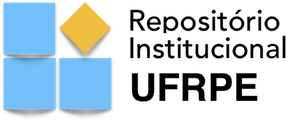ALERTA!
O Repositório Institucional da UFRPE passou a funcionar em um novo endereço: arandu.ufrpe.br
Use este identificador para citar ou linkar para este item:
https://repository.ufrpe.br/handle/123456789/3788| Título: | Distribuição espaço-temporal da fauna ictioplanctônica e de Chaetognatha e sua interação no litoral norte de Pernambuco |
| Autor: | Silva, Jade Beatriz Alves da |
| Endereco Lattes do autor: | http://lattes.cnpq.br/7346027083165974 |
| Orientador: | El-Deir, Ana Carla Asfora |
| Endereco Lattes do orientador : | http://lattes.cnpq.br/4822569793807941 |
| Palavras-chave: | Ictiologia;Estuários;Ictioplâncton;População de peixe;Predação (Biologia) |
| Data do documento: | 27-Jan-2020 |
| Citação: | SILVA, Jade Beatriz Alves da. Distribuição espaço-temporal da fauna ictioplanctônica e de Chaetognatha e sua interação no litoral norte de Pernambuco. 2020. 36 f. Trabalho de Conclusão de Curso (Bacharelado em Ciências Biológicas) - Departamento de Biologia, Universidade Federal Rural de Pernambuco, Recife, 2020. |
| Abstract: | The success of the early stages of life in fish influence recruitment and determines the structure of adult populations. In the larva period, these individuals are more vulnerable to predation and other factors that affect their survival and/or mortality. Chaetognathas are described as voracious predators and can feed on fish larvae, thus affecting the distribution and success of ichthyoplankton. In this context, the study aimed to analyze the spatial distribution of ichthyoplankton in the Jaguaribe River estuary and Jaguaribe beach, correlating with the occurrence of Chaetognatha. The collections were carried out in August, September, October and December 2017 in three points, these were distributed at the mouth of the Jaguaribe River, bursting Jaguaribe beach and corral. The collected individuals were fixed in situ in 4% saline formaldehyde and later screened in laboratory and stored in ethanol 70%. 88 larvae were collected, identified in three orders and six families, including: Achiridae, Engraulidae, Carangidae, Clupeidae, Gerreidae and Gobiidae. The most abundant family was Engraulidae, being present in all months and points sampled. The surf zone was the site with the highest abundance of larvae. 574 Chaetognathas were collected and identified in one order, two families and three species. These were present in all sampled points, however, they presented greater abundance in the corral region. A total of 5305 eggs were collected, of these 4161, they were eggs of Engraulidae. The month of September presented the highest abundance of eggs, with 78.4% of the total collected. When comparing the distribution of ichthyoplankton and Chaetognathas, an overlap was observed in the occurrence of these. The spatial distribution of ichthyoplankton is highly influenced by the occurrence of Chaetognathas, since these are large predators. With a decline in the abundance of Chaetognathas there is an increase in ichthyoplankton, proving the existence of an inversely proportional relationship. |
| Resumo: | O sucesso dos estágios iniciais de vida nos peixes influência no recrutamento e determina a estrutura das populações adultas. No período de larva, esses indivíduos estão mais vulneráveis a predação e outros fatores que afetam sua sobrevivência e/ou mortalidade. Chaetognathas são descritos como predadores vorazes, podendo se alimentar de larvas de peixes, afetando assim, a distribuição e o sucesso do ictioplâncton. Nesse contexto, o estudo teve como objetivo analisar a distribuição espacial do ictioplâncton no estuário do rio Jaguaribe e na praia de Jaguaribe, correlacionando com a ocorrência de Chaetognatha. As coletas foram realizadas nos meses de agosto, setembro, outubro e dezembro de 2017 em três pontos, estes, foram distribuídos na foz do rio Jaguaribe, arrebentação da praia de Jaguaribe e curral. Os indivíduos coletados foram fixados in situ em formol salino a 4% e posteriormente triados em laboratório e conservado em etanol 70%. Foram coletadas 88 larvas, identificadas em três ordens e seis famílias, sendo elas: Achiridae, Engraulidae, Carangidae, Clupeidae, Gerreidae e Gobiidae. A família mais abundante foi Engraulidae, estando presente em todos os meses e pontos amostrados. A zona de arrebentação foi o local com maior abundância de larvas. 574 Chaetognathas foram coletados e identificados em uma ordem, duas famílias e três espécies. Estes, estiveram presentes em todos os pontos amostrados, porém, apresentaram maior abundância na região do curral. Foram coletados 5305 ovos, destes 4161 foram ovos de Engraulidae. O mês de setembro apresentou a maior abundância de ovos, com 78,4% do total coletado. Ao comparar a distribuição do ictioplâncton e Chaetognathas, foi observado uma sobreposição na ocorrência destes. A distribuição espacial do ictioplâncton é altamente influenciada pela ocorrência de Chaetognathas, uma vez que estes, são grandes predadores. Com um declínio na abundância de Chaetognathas ocorre um aumento do ictioplâncton, comprovando a existência de uma relação inversamente proporcional. |
| URI: | https://repository.ufrpe.br/handle/123456789/3788 |
| Aparece nas coleções: | TCC - Bacharelado em Ciências Biológicas (Sede) |
Arquivos associados a este item:
| Arquivo | Descrição | Tamanho | Formato | |
|---|---|---|---|---|
| tcc_jadebeatrizalvesdasilva.pdf | 568,83 kB | Adobe PDF | Visualizar/Abrir |
Os itens no repositório estão protegidos por copyright, com todos os direitos reservados, salvo quando é indicado o contrário.
